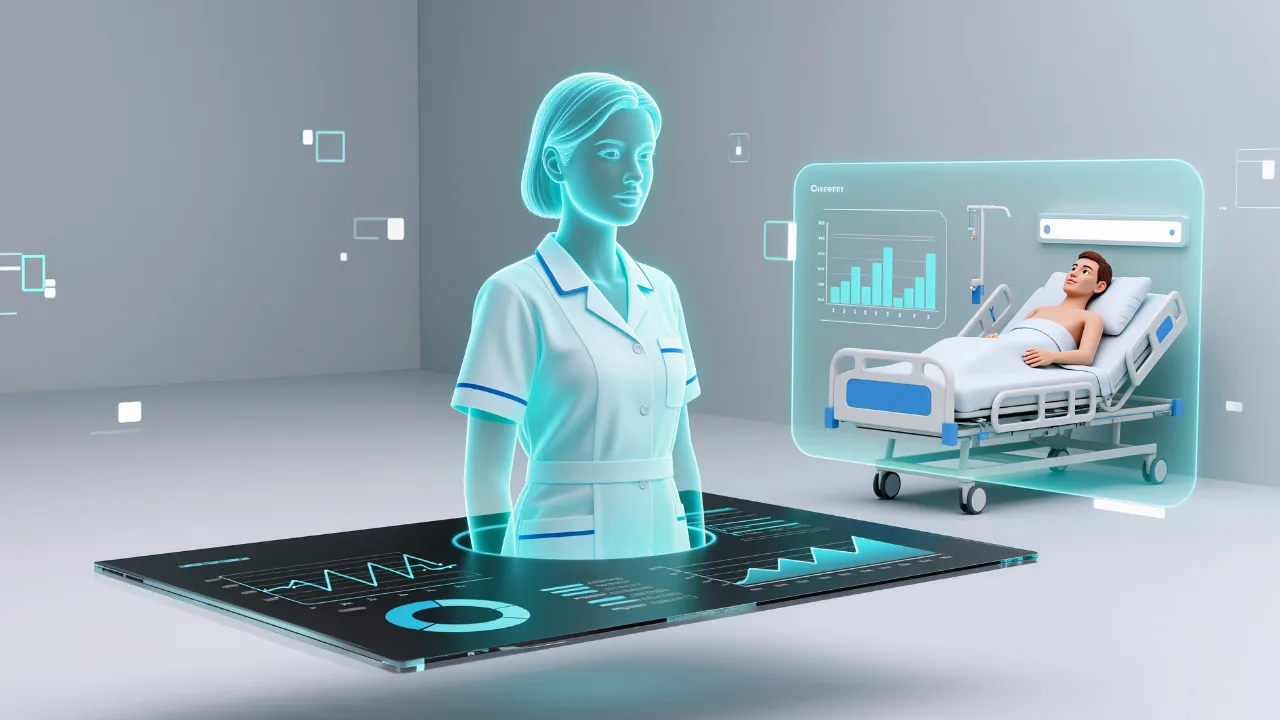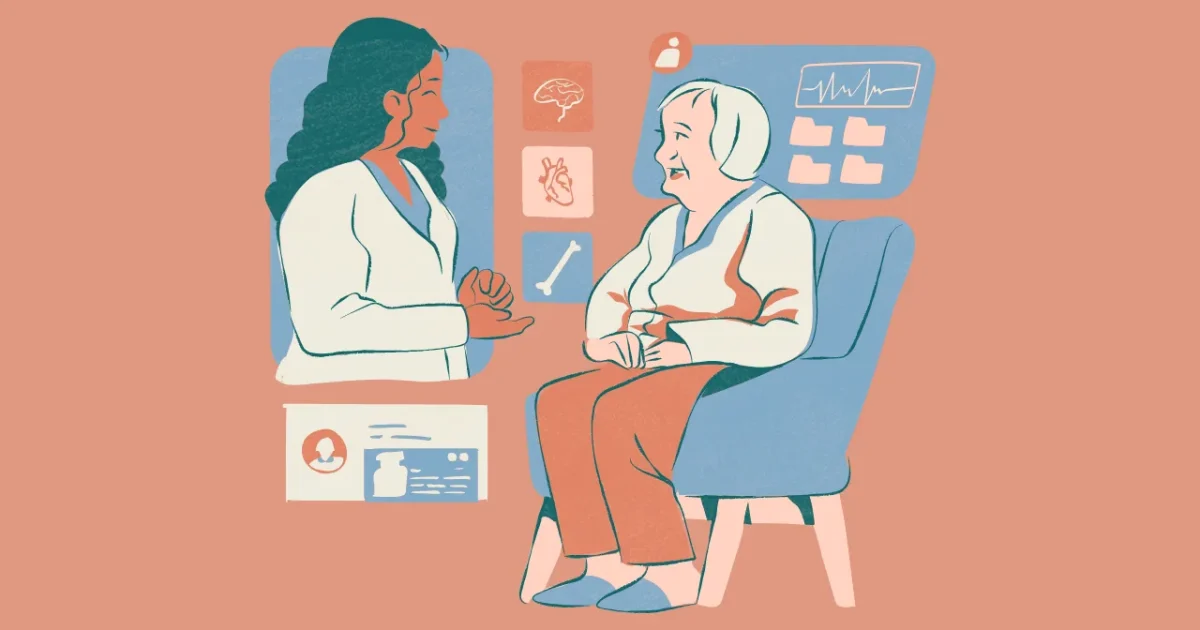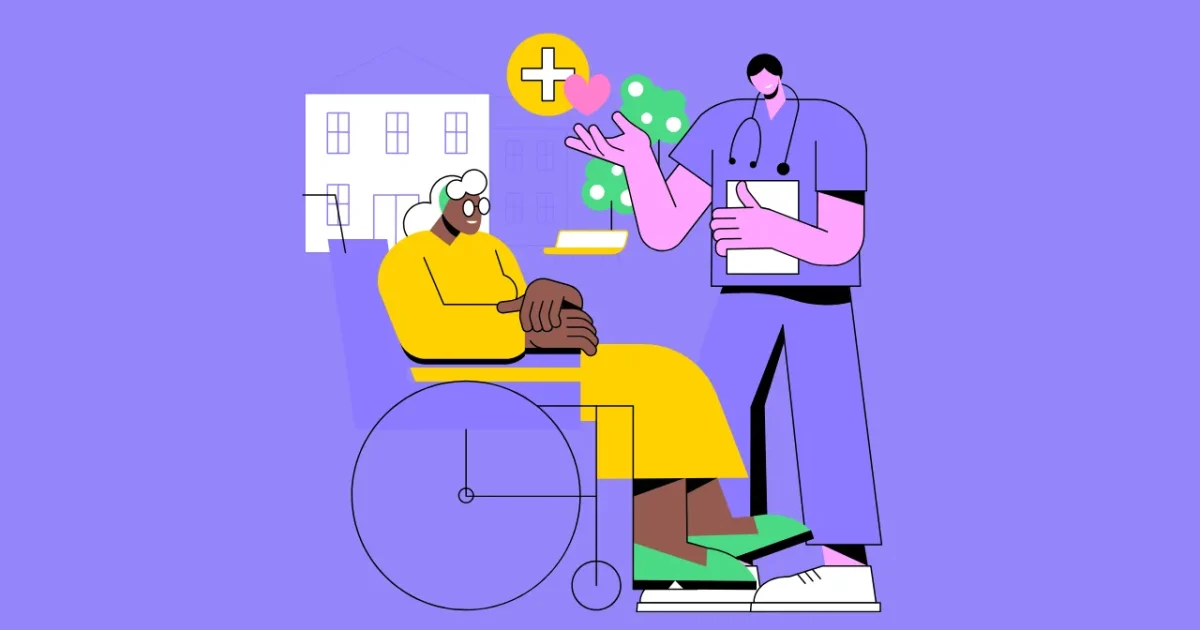Have you ever been in the middle of a hectic shift. Charts pile up, patients wait, and that nagging doubt creeps in—will AI take over my job, or mess up a diagnosis? If you’re like many experienced docs skeptical of tech hype, this uncertainty hits hard. It feels like traditional methods you’ve honed for years are under threat. But what if AI isn’t the enemy? Let’s dive in and compare AI vs traditional patient care head-on. We’ll uncover real differences to ease that resistance and show how it can actually make your day better.
What Is AI vs Traditional Patient Care?
Think of traditional patient care like a trusty old bike. It’s reliable, lets you feel every bump in the road, and you’ve pedaled it for years. AI vs traditional patient care flips that script—AI is like adding a smart electric motor. It speeds things up but needs you steering.
In simple terms, traditional care relies on your eyes, ears, and gut feel. You chat with patients, scribble notes, and pore over scans. AI healthcare comparison steps in with algorithms that crunch data lightning-fast. No coffee breaks needed. But here’s the deal: AI doesn’t “think” like you. It’s a tool, not a replacement. A 2025 NIH review shows AI boosts diagnostic accuracy by 15-20% when paired with humans. So, what’s the bottom line? It’s about teaming up for smarter outcomes.
AI could significantly reduce inefficiency in healthcare, improve patient flow and experience, and enhance caregiver experience and patient safety through the use of predictive analytics.” — World Health Organization experts, via NIH insights (2025)
AI Healthcare Comparison: Where Humans Win and AI Zooms Ahead
Ever wonder if machines can match your bedside manner? Human vs machine in medicine boils down to empathy versus speed. You build trust with a patient’s story—AI can’t hug or crack a joke. But for crunching numbers? AI crushes it.
Take diagnostics. In manual clinical processes, you review labs manually. AI scans them in seconds, flagging risks like sepsis early. Benefits of automated healthcare? Less burnout, more time for real talks. Yet risks lurk: AI can bias if trained on skewed data, missing diverse patients.
Think of it this way: You’re the chef tasting the soup; AI is the mixer prepping ingredients. A hybrid setup—augmented intelligence—lets you focus on what matters: critical thinking and connection.
“It is time to abandon the binary choice between human-only and AI-only approaches. Embracing hybrid intelligence is more pragmatic and effective.” — Cornelia Walther, Forbes contributor on AI safety (June 2025)
Manual Clinical Processes That AI Can Transform
Old-school workflows drag on. Transcribing notes? Hours lost. Efficiency of AI in hospitals cuts that to minutes. A 2025 study found AI transcription tools boost doc productivity by 25%.
Here’s a real-world example: You’re dictating after rounds. Instead of typing, feed audio to an AI like Otter.ai (tuned for medical lingo). It spits out clean notes. Prompt it like: “Transcribe: Patient reports sharp chest pain on exertion, no radiation.” Boom—editable text ready.
But don’t ditch the pen yet. Review AI outputs; it misses nuances like sarcasm.
For a quick code peek (if you’re tech-curious), here’s a simple Python snippet using a library like speech_recognition to demo basic transcription. Imagine integrating this into your EHR:
import speech_recognition as sr
# Set up recognizer
r = sr.Recognizer()
with sr.Microphone() as source:
print("Say something clinical...")
audio = r.listen(source)
# Recognize speech (use medical API in real life)
try:
text = r.recognize_google(audio)
print(f"Transcribed: {text}")
except:
print("Try again!")
This is baby steps—real tools like Nuance Dragon Medical are hospital-ready.
“AI’s rapid and accurate analysis of complicated medical data presents a promising path toward more accurate, data‐driven decision‐making in the healthcare sector.” — NIH researchers on AI impacts (2025)
Task-by-Task Breakdown: Traditional vs. AI Methods
To help you decide fast, check this comparison table. It spotlights core tasks, showing how AI vs traditional patient care plays out. The goal? Spot quick wins for your shift without overwhelming changes.
| Task | Traditional Method | AI Method | Time Saved | Accuracy Boost | Best For Skeptics’ Note |
|---|---|---|---|---|---|
| Reading a Chest X-ray | Manual scan review by radiologist (20-30 min) | AI flags anomalies like pneumonia (seconds) | 80% | +5-10% when hybrid | Start here—AI aids, doesn’t replace your eye. |
| Transcribing Notes | Handwritten or typed dictation (15-20 min) | Voice-to-text AI (e.g., Google Cloud Speech) | 70% | N/A (efficiency focus) | Frees you for patients; edit for tone. |
| Predicting Sepsis | Symptom checks + labs (variable time) | AI algorithms scan vitals (real-time) | 90% | +15% | Early alerts save lives—trust but verify. |
| Triage Prioritization | Nurse/doctor queue based on gut (10 min/pt) | AI scores urgency from symptoms (instant) | 60% | +20% in trials | Reduces wait errors in busy ERs. |
This table draws from 2025 trials—AI shines in data-heavy spots, but you own the final call.
Visualizing the Shift: Accuracy in Key Diagnostics
Curious how numbers stack up? This bar chart compares average accuracy (from 2025 meta-analyses) for humans alone, AI alone, and hybrid teams. Data shows hybrid wins big—up to 95% for chest reads. Blues and teals keep it calm, like your scrubs.

Your Practical Guide: 5 Questions for Clinicians to Ask About Integrating AI
Ready to dip a toe? Don’t jump blind. Use this step-by-step guide to grill any AI tool. It’s tailored for skeptics like you—start small, build trust.
- Does it fit my daily grind? Ask: “How does this speed up my top three tasks without extra clicks?” Test on notes first.
- What’s the error rate in my world? Probe: “Show 2025 accuracy stats for diverse patients like mine.” Demand real trials, not hype.
- Can I override it easily? Check: “How quick is the human veto button?” You lead; AI follows.
- Privacy locked down? Question: “How does it guard patient data per HIPAA 2025 updates?” No leaks on your watch.
- ROI for my team? Final ask: “What’s the training time and burnout drop?” Aim for 20% time back—measure it.
Follow these, and integration feels less scary. Pro tip: Pilot one tool quarterly.
“AI is the key to unlocking personalized medicine, tailoring treatments to individual genetic profiles and lifestyles.” — AI in Healthcare Conference speaker (May 2025)
The Future of Clinical Jobs: Augmented, Not Automated
Fast-forward to 2026. Efficiency of AI in hospitals means fewer rote tasks, more innovation. Future of clinical jobs? Brighter with smart care vs traditional methods. You’ll diagnose rarer cases, mentor juniors, even research. But only if we push hybrid now—AI handles the grind, you the genius.
The main argument? AI isn’t smarter than you; it’s your sidekick. Embrace it to cut uncertainty and reclaim joy in medicine.
Frequently Asked Questions (FAQs)
Can AI really replace doctors in patient care?
No way—AI excels at data but misses the human spark. 2025 studies show hybrid teams outperform solos by 15%. It’s augmentation, not automation.
What are the biggest risks of AI in hospitals?
Bias in algorithms and data privacy top the list. Vet tools rigorously to sidestep them.
How does AI improve manual clinical processes?
It automates tedium like note-taking, freeing 20-30% more time for patients. Start with one workflow tweak.
Is AI ready for my skeptical practice in 2025?
Absolutely—trials prove 90%+ accuracy in key areas. Use our 5 questions to test-drive safely.
What’s next for human vs machine in medicine?
Hybrid models dominate, blending your expertise with AI speed for personalized care.





